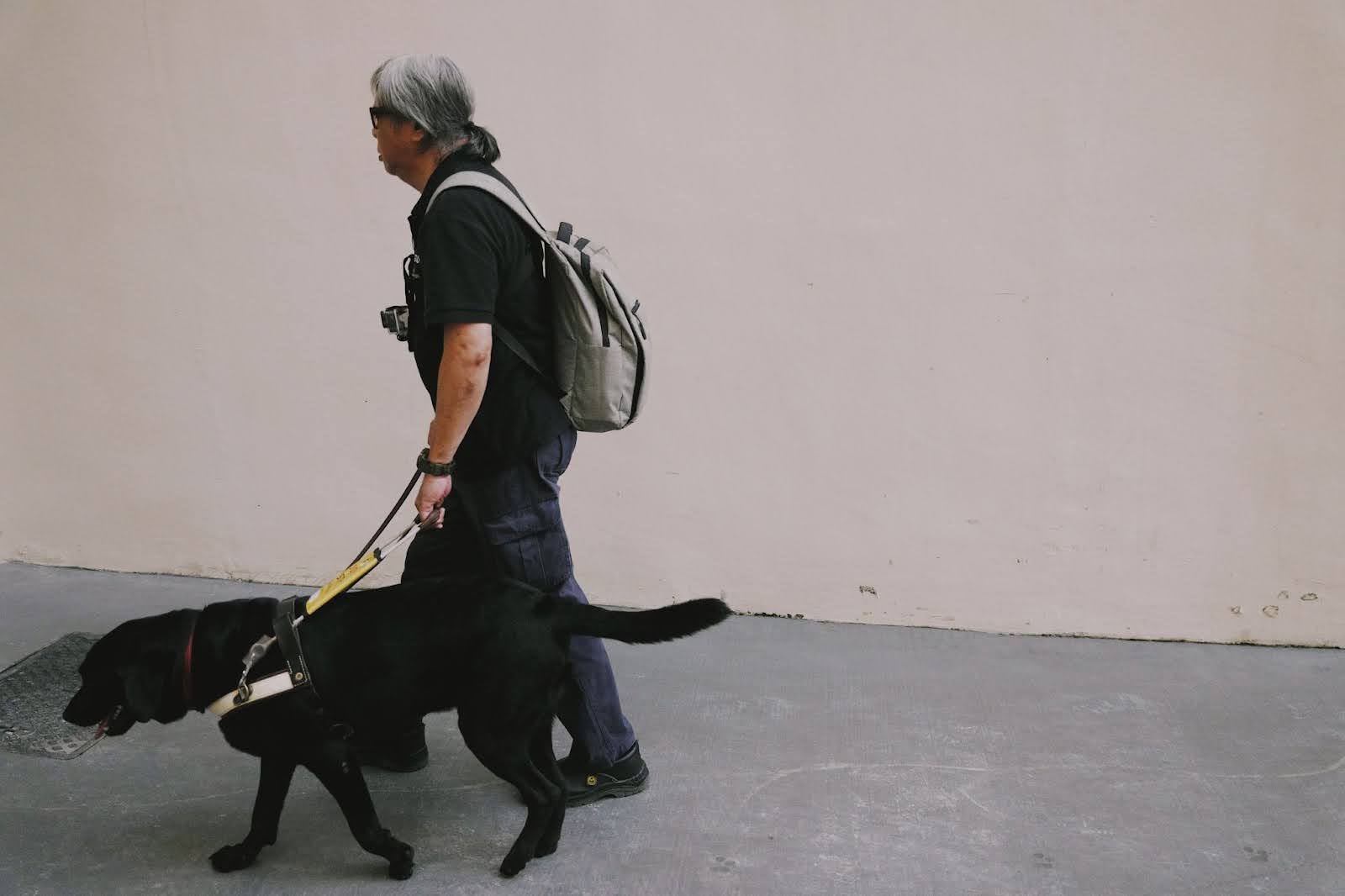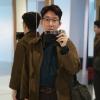Seeing things in a different light
I usually work behind the scenes amplifying Our Better World’s stories on social media as a digital marketer. However, this time I got the opportunity to draw on my passion for street photography to work with Cara, our editor, to capture a day in the life of Gary, a blind person, and his guide dog, Matt. The skills of observation, connection-building, and body language reading—essential to street photography—proved valuable as I navigated the challenges of capturing a story in a public setting. It was a rewarding experience that deepened my understanding of their journey.
Just as a camera is an extension of a photographer's eye, capturing moments in time, a guide dog is an extension of a visually impaired person's senses, helping them navigate the world.
I’ve always wondered how service dogs maintain the balance between being in work mode and having a special bond with their user. When I first met Gary and Matt at their home, Matt seemed like any other playful domestic pet. I was really touched by how affectionate Gary was towards Matt and how he mentioned that Matt was a beloved family member. While I've seen many owners treat their dogs like family, there was something unique about the bond between Gary and Matt. Not only was Matt well-trained to understand instructions, but also incredibly attuned to Gary’s needs, always nearby and ready to assist.
The moment Gary clips on Matt’s harness and heads out, there's a noticeable switch in Matt from playful companion to focused guide. Gary, in turn, relied on Matt’s guidance, interpreting the subtle cues and adjustments. The trust between them was palpable. Gary offered words of encouragement and praise during both smooth sailing and challenging moments, highlighting the depth of their connection. Observing their dynamic gave me a deeper understanding of the extraordinary bond between a guide dog and its user.
As a street photographer, I love observing people and capturing fleeting moments. Some of my favourite shots come from carefully watching people's behaviour and anticipating a decisive moment. When I started documenting Gary and Matt’s day, I was curious to see how the public would react. While I expected some challenges, I was pleasantly surprised by the overall positivity and respect.
A woman bumped into Gary as she was distracted by her mobile phone. She was visibly annoyed and this was a reminder that, without a white cane, people might not immediately recognise his visual impairment and assume that Gary was just walking his pet dog. This moment brought to light the importance of awareness and understanding.
On public transport, people were generally intrigued and accommodating, giving up their seats for Gary and making sure not to get in Matt’s way. I was particularly touched by a heartwarming moment when a young girl was captivated by Matt. Her mother, noticing her daughter's fascination, gently explained that Matt was a guide dog who helps people who can't see, and we should not disturb him while he was at work.It was a simple act of kindness, a teachable moment that could shape a young mind.
There were also moments when well-intentioned people offered help. One time, a man tried to use hand gestures to tell Gary that he could exit the train first, not realising that clear verbal communication is essential for those who are visually impaired.
Another instance involved a woman who offered to guide Gary to the correct train platform. However, she may have inadvertently disrupted his familiar routine because, for visually impaired individuals, established routes and sensory cues are crucial for navigating their surroundings. While their intentions were good, more awareness about the specific needs of a visually impaired person can help make such assistance more effective .
Finally, I was impressed by the efficiency of Singapore’s public transport staff in assisting people with disabilities. Their support, especially during transfers, made Gary’s journey smoother. It’s a testament to the increasing accessibility and inclusivity of our public spaces. Imagine trying to identify a specific bus among multiple arrivals, solely relying on printed numbers. It’s a challenge that many visually impaired individuals face. The station staff’s assistance made a significant difference in Gary’s travel experience.
Photographing this story was a challenging endeavour, as it required capturing spontaneous moments while following Gary and Matt on their daily commute. It was crucial to respect their routine and avoid disrupting their journey. We had to anticipate their route and be ready to capture brief moments in a dynamic and uncontrolled environment. Knowing that we had only one take to capture their authentic routine added an extra layer of pressure.
One of the biggest challenges was keeping up with their pace while capturing the necessary shots. Their efficient navigation often caught me off guard, forcing me to quickly adjust my position. I had to be mindful of my proximity, especially from the front, to avoid obstructing Matt's path or confusing him.
Shooting on public transport presented additional challenges. To minimise distractions, I switched to a smaller camera and adopted a more discreet approach. Unfortunately, one family misinterpreted our intentions, assuming we intruded on their privacy. They started filming us and made a few unpleasant comments, glaring at us as they exited the train. While it was initially unsettling, I found their behaviour rather amusing, particularly their lack of effort to clarify the situation.
As a photographer, I’ve experienced how the art of seeing can offer new perspectives and heal emotional wounds. However, Gary's experience made me realise that true vision goes beyond physical sight. Despite his visual impairment, his ability to navigate the world with imagination and courage was truly inspiring, especially after learning how he overcame frustration and embraced his new reality.
Through working on this project, I gained a deeper understanding of the intricacies of navigating the world as a visually impaired person and the complexities of using a guide dog in public settings. While I'm accustomed to capturing fleeting moments as a street photographer, this project required a more deliberate and thoughtful approach. I had to carefully consider each shot, ensuring it conveyed a meaningful message.
Gary's experiences and my firsthand observations highlighted the importance of empathy and compassion in our society. Often perceived as a fast-paced and self-centred place, Singapore can benefit from a greater sense of community and understanding. By being empathetic and extending acts of kindness, we can create a more inclusive and harmonious society.





